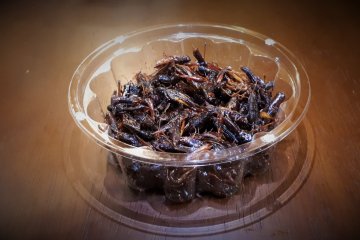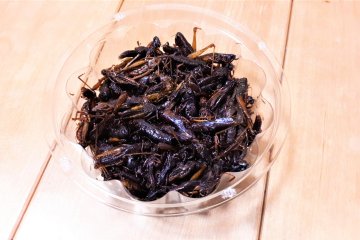Heading back to our accommodation after sightseeing at the incredible Fukuroda Falls in Ibaraki Prefecture and dining at a local noodle restaurant, I spied a small street stall selling what appeared to be, well, I wasn't sure but it looked interesting. Sauntering over I asked the gentleman behind the counter what he was selling. Well, low and behold, he tells me he is selling inago, or locusts.
I had to have some. I had been waiting years to try some inago. I know they are eaten in places like Nagano and Gunma but alas, these insects had eluded me for far too long and so I quickly picked up a packet of them. I confirmed with the stall attendant that they could be eaten as is and chuckling as he said so, he assured me that no further preparation was necessary. No doubt he had been asked similar questions before...

To put it simply, they were great. Very sweet but that was because of the cooking method. Known as inago no tsukudani, the locusts are kept for a day or so, so that anything it ate, well, removes itself... They are then boiled before being simmered or fried in a soy sauce and sweet mirin mixture. The result is slightly crunchy but with quite a sweet taste.

Usually eaten with rice, inago were a useful source of protein for folk back in the old, old days. Apparently on par with chicken for protein content but higher in fat, inago must have served the people of Japan's inland mountain ranges well.
As for me, I simply nibbled on mine as if they were a snack. Despite not tasting in the least bit 'insecty' I wasn't able to convince anyone in my family to try any. Too bad for them and as they say, more for me.









